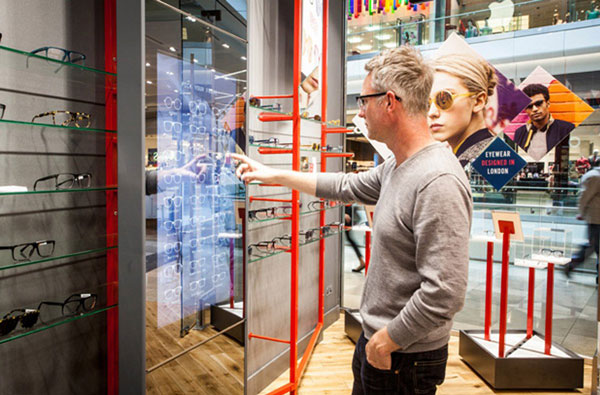This post is also available in:
![]()
![]()
![]()
![]()
![]()
![]()
How important is vision care for high-value customers? Let us understand this by Nilesh Thite, M.Optom, FIACLE, FAAO and Speaker, Contact Lenses at VP Academy, Mumbai
In every field, there are stars and superstars. In soccer, there are Messi and Ronaldo. In cricket, there are Dhoni, Kohli and De Villiers. These stars make the field attractive and the sports worthy of a watch, isn’t it? Similarly, in the domain of optical trade, there are high-value customers. Without these customers, the business will lose its competitive advantage and market share, resulting in a decreased performance. In worse scenarios, loss of high-value customers could result in a bad reputation or a big fall for the business.
Understanding high-value customers
High-value customers look at products, services, and brands as a way to meet a need and satisfy a drive such as status, health or even lifestyle. In fact, these customers continue to remain loyal to a brand or company, even in times of financial pressure. For them, the cost is not a priority. They are focused on having their unique needs addressed. These high-value customers are the thought leaders and can become brand promoters and influencers, as well. It is important to be aware of why these customers spend large portions of their income on the products they choose.
Customers want convenience
‘Necessity is the mother of invention’—we have heard this cliché a million times and yet it is so apt, in almost every business scenario. We are living in a world where consumer needs are the main driving force behind market evolution. One such important need is ‘convenience.’ Today, each one of us is seeking convenience in every product and service, that we choose to indulge in. The evolution of supermarkets, e-businesses, radio cabs are a testimony to this fact. Even in our field of eyecare & contact lenses, multi-purpose solutions are the commonly used product, uniquely developed for consumers demanding ‘convenience.’
One more category that is gaining popularity is – daily disposable lenses. Clinically it is the safest contact lens replacement schedule. It offers the wearer a comfortable and hassle-free experience. The dreaded part of lens wear i.e. care and maintenance is removed and the requirement of carrying lens care solutions as well as cases is also eliminated. Daily disposable lenses are the most convenient category of contact lenses and hence preferred by the high-value customers.
Tapping an opportunity
Toric contact lens fitting for the correction of astigmatism is an essential aspect of modern contact lens practice. After all, these days more and more patients seek contact lenses that are not only comfortable in the eye but also provide consistent and clear vision. In my opinion, there is a huge untapped potential in the domain of prescribing astigmatic or toric lens. This has led to the launch of many soft lens toric designs making the segment a lucrative option for those in the trade. Additionally, the improved designs have made toric lens fitting more easy, which was once considered a difficult task for the manufacturers.
Yet many eye care practitioners still under prescribe toric lenses in low astigmatism – thanks to the popular 4:1 sphere-cylinder ratio. It is important not to prejudge patients’ vision requirements and prescribe toric contact lenses with confidence. We need to start talking to low astigmatic patients how these lenses would change the world they see. Now the difference in the cost of toric lenses vis a vis spherical lenses, especially in the daily disposable category is minuscule. The visual benefits they offer surely outweigh the cost.
Another untapped area in contact lens practice is presbyopia. Presbyopic patients, in particular, offer a considerable opportunity. For instance, almost all (93%) 35 to 55-years-old contact lens wearers remain committed to using contacts as they transition into presbyopia. A majority of practitioners across the world recognise these market dynamics, with 59 percent of them concluding that fitting more presbyopes is the best means for practice growth.
Today, presbyopes maintain active lifestyles for a longer period of time and many are seeking more convenient, style-conscious alternatives to spectacles for correction of presbyopia. A variety of contact lens correction options are now available for these presbyopic patients.
Correcting presbyopia with contact lenses can be both rewarding and challenging. The nature and significance of presbyopia itself may need to be explained clearly to the patient before proceeding to detail their correction options (i.e. contact lenses and spectacles) along with the advantages and disadvantages of each. Once contact lenses are chosen, the applicable aspects of presbyopia will also need to be presented.
And to conclude…
As contact lens research and designs progress, the number of patients who can benefit from contact lenses also increases. Consequently, 78 percent of eye care professionals recognise that growing their contact lens business will be integral to their practices’ success and expansion. In today’s competitive world, to build a successful practice and maintain it consistently it is important to stay abreast of the latest developments in the field. At the same time, this education should be imparted to everyone in the practice including the support staff. In fact, I believe that this information should be passed on to the patients to inform them of this option for vision correction. We owe this much to our stars, don’t we!










